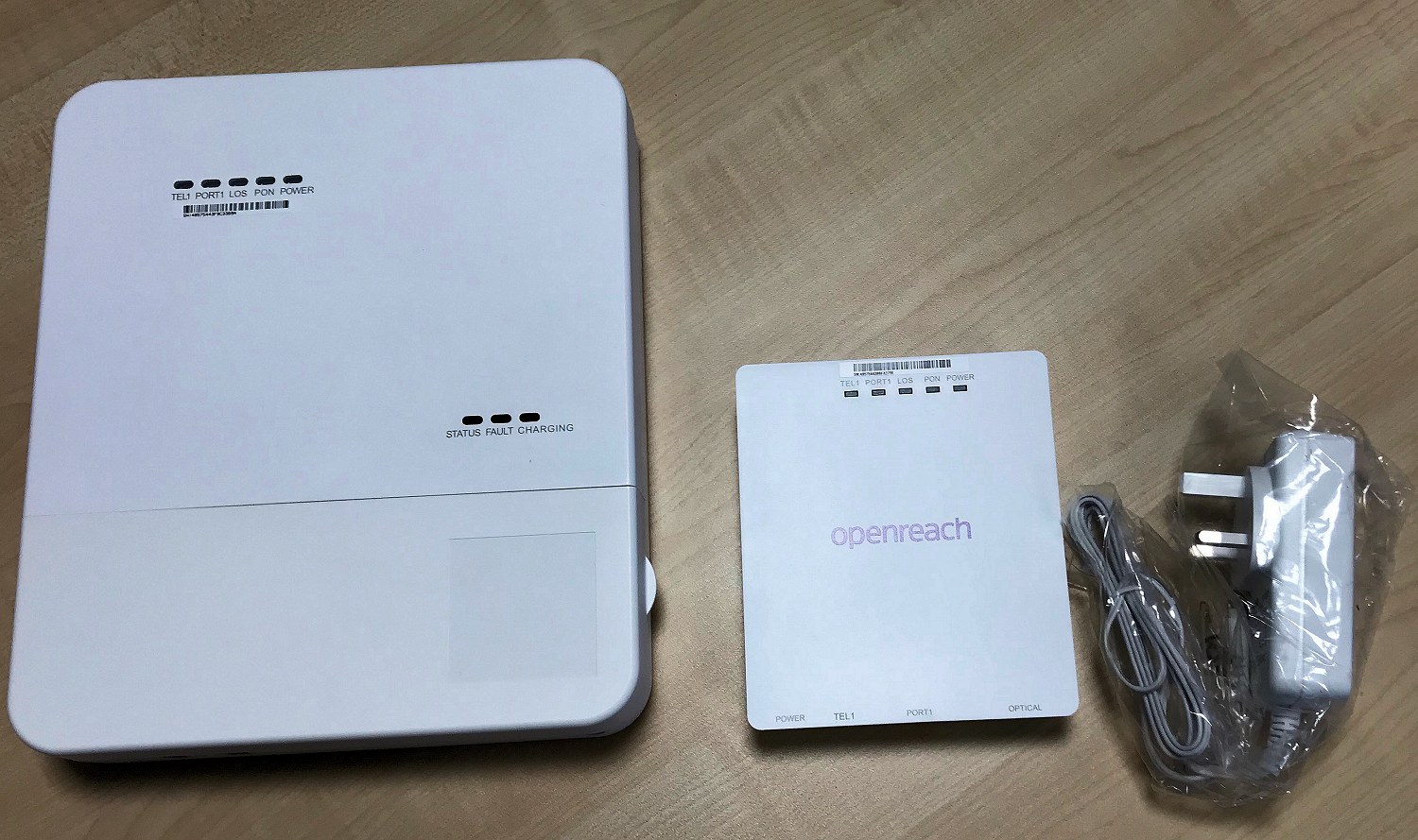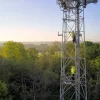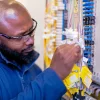A Look at Openreach’s New Small FTTP Broadband ONT and Mini OLT
Installations of Openreach’s (BT) Fibre-to-the-Premises (FTTP) based UK ultrafast broadband ISP technology will soon begin seeing a new Optical Network Unit (ONT), which is not only very compact (pictured top) but also comes in at a third of the cost of the existing unit. Obviously they’ve sacrificed a few little things.
The ONT tends to be installed inside your home (wall hung), usually near to where the fibre optic cable physically enters the property, and it’s primary job is simply to take that optical signal and convert it into an electrical one so that you can hook-up a broadband router via a standard LAN / Ethernet port.
Openreach’s previous ONT tended to be shipped – inside a single case – alongside a Battery Backup Unit (BBU) by default but the latter is no longer a requirement (here). Essentially the new ONT isn’t much different from the one that was previously inside the aforementioned case, it’s just a little smaller (featuring one data port and one voice port) and obviously there’s no battery now.
Advertisement
You can see a comparison between the old ONT+BBU case (closed lid) and the new solo ONT below. Nothing special, we just thought readers might like to know that this is what new FTTP installs are starting to include.

One other related FTTP change that might be worth noting relates to remote nodes. The maximum reach of an FTTP splitter (a bit of kit that divides up optical fibres from an exchange to properties) is 58 kilometres. So customers living further away than this from an exchange in remote or rural areas can’t get ultrafast speeds.
This year has seen Openreach introduce a new type of splitter (aka – Gigabit Passive Optical Network Splitter), which fits in a street cabinet or small rural exchange and “means we can now get FTTP to customers who are up to 98 kilometres from the exchange,” said Openreach.
Advertisement
Making space in existing cabinets (or extending those cabinets) does require a few changes but the actual splitter (aka – mini-head end or mini-OLT [Optical Line Terminals]) looks like this. The operator tends to call this a “subtended head end“:

Mark is a professional technology writer, IT consultant and computer engineer from Dorset (England), he also founded ISPreview in 1999 and enjoys analysing the latest telecoms and broadband developments. Find me on X (Twitter), Mastodon, Facebook, BlueSky, Threads.net and Linkedin.
« Cityfibre Adds Cubis to its List of UK Full Fibre Network Suppliers
















































There is an even smaller ONT that they are now using with no voice port! I was very surprised to see this installed in the St Albans area